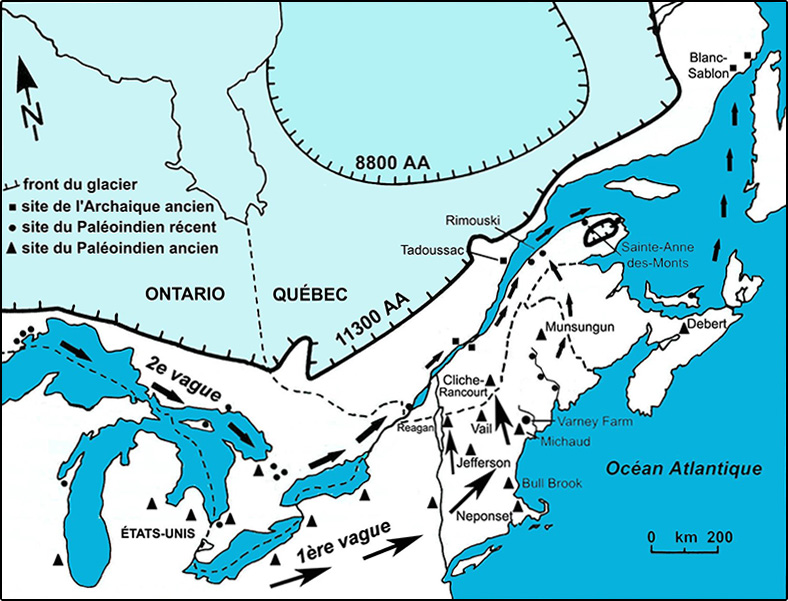The archaeological sites of the Early Palaeoindian, Late Palaeoindian, and Early Archaic periods make it possible to speculate on the routes taken by the earliest inhabitants.
A first wave of descendants of the Western Clovis is believed to have reached the shores of the Atlantic. There are no traces of them north of Lake Munsungun, in Maine. In Quebec, only the Cliche-Rancourt site in the Megantic region revealed artifacts from this period.
The location of sites from the Late Palaeoindian period (Plano culture) revealed that a second wave of migrants arrived from the West, passing farther north than their Clovis predecessors. Several of them travelled along the south shore of the river to reach the Gaspésie. Others went to the Atlantic Ocean; there are many traces of this culture along the Penobscot River in Maine.
Finally, Early Archaic sites are mostly located on the northern shore of the St. Lawrence River, up to Blanc-Sablon. There is also a site on Prince Edward Island. The Gaudreau site, near Weedon in the Eastern Townships, contains artifacts from all these periods and even up to the historical period. This site alone provides a good evidence of the human settlement of the Eastern Townships.

Routes of the first two waves of migration in eastern North America.



